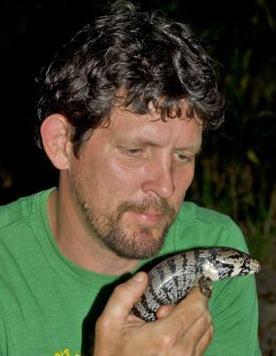
8 December 2010 (AGM)
Prahran RSL – 301 High Street – Prahran
7.15pm – 10.30pm
“The Terrible Truth about Toads: Impacts of Cane Toads on Native Predators and Implications for Extinction, Recovery and Control” by Dr J. Sean Doody – Monash University.
Invasive and toxic cane toads are well-known for lethally poisoning predators that try to eat them, including birds, mammals, and reptiles. However, robust (multi-year) evidence for population-level impacts is limited to a single study demonstrating major effects on three species of goannas, contrasting with no effect on freshwater crocodile populations, despite some dead (poisoned) crocodiles in the Daly River system. Thus, dead animals cannot be generalised into population-level impacts. Other studies documenting mass mortality of radio-telemetred goannas and quolls are also indicative of major population-level impacts on those species. A second study apparently demonstrating population-level effects across months on populations of freshwater crocodiles in the Victoria River system indicates a lack of generality across river systems for that species. There have been no species extinctions; although population extinctions may have occurred, particularly in quolls, based on decades of ‘no-sightings’ in much of Queensland. Despite reports to the contrary, there is no solid evidence of recovery of predator populations in the years following toad arrival. This is due to the lack of pre-toad baselines of predator abundance in Queensland, and a short post-toad time interval in areas with baselines (Northern Territory, Western Australia) in these longer-lived species. Meanwhile, realistic and effective large-scale toad control options remain elusive. Smaller-scale approaches are proving useful in reducing and potentially eradicating local toad populations, educating stakeholders on toad issues, and bringing together communities. However, because an encounter with one toad is sufficient to kill a predator, the persistence of just a few toads in a population of predators would lead to an encounter probability of 100%, meaning that anything short of eradication is unlikely to save predator populations from imminent declines. Thus, local control would need to be comprehensive and sustained indefinitely to prevent major impacts. Moreover, using control as an effective conservation tool requires follow-up studies to demonstrate the persistence of predator populations, although this requires substantial resources. I discuss a rare opportunity for local control that may be both effective and sustainable due to site-specific geomorphology, scale, and logistics.
